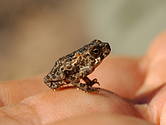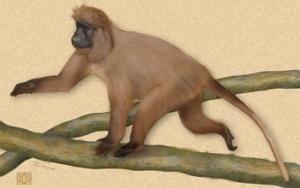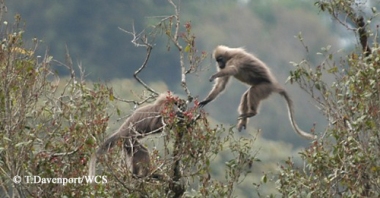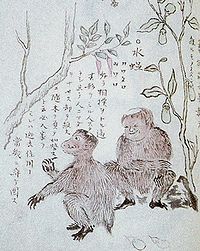
March 5, 2009

There appears to be an issue that a couple people wish to bring to the level of a new thread.
The nature of animals being “ethnoknown,” realized and acknowledged by local peoples, is essential to a clear understanding of what is a cryptid. (Please recall, by definition, a “cryptid” may turn out to be a known animal. Sometimes an ethnoknown cryptid that seems to look like a moose is nothing more than a moose.)

For some cryptozoologists, such as Chad Arment, being “ethnoknown” is pivotal to their view of cryptozoology.
Arment defined (here in 2007) cryptozoology as “a scientific ethnoknown-targeted methodology for zoological discovery.”
Furthermore, in his steps to achieving this practice, in the methods of the new science, he notes that cryptozoology “targets ethnoknown species. These are alleged animals with enough salience (observable characteristics) to be recognized as something distinctive or unknown, either by a native people group, or chance eyewitnesses. In some cases, a cryptid may be well-known, or may only have been reported a handful of times.”

Michel Raynal, looking at the limits of what concerns cryptozoology, touched on the issue of “ethnoknown,” when he wrote that,
As the size is not a criterium to state what is cryptozoological and what is not, Bauer and Russell (1988) have thus suggested an intensive research in what they call “microcryptozoology”, that is to say the search for little unidentified animals, but Dethier and Dethier-Sakamoto (1988) noticed:
“We entirely agree with Bauer and Russell when they point out the importance of searching for small and discrete unknown animals. If they are not ethnoknown, however, they are, of course, outside the scope of cryptozoology.”
This statement, though often true, is not an absolute rule. The definition of cryptozoology by Heuvelmans (1988) is much less restrictive:
“The scientific study of hidden animals, i.e. of still unknown animal forms about which only testimonial and circumstancial evidence is available, or material evidence considered insufficient by some.”
As a consequence, a cryptozoological research is still possible when no observation or native tradition is available: any information based on circumstancial evidence, allowing to forsee the existence of an unknown animal form, is relevant to cryptozoology.

Just to round out the cryptozoological use of the word “ethnoknown,” let me quote Darren Naish from his 2006 discussion of the discovery of the the Highland mangabey (Lophocebus kipunji). Observe how Darren used “ethnoknown,” in context:
The story of the Highland mangabey’s discovery is an interesting one. In January 2003 Tim Davenport of the Tanzanian Wildlife Conservation Society ‘heard rumours [from the local Wanyakyusa people of the Mount Rungwe region] about a shy and atypical monkey known as Kipunji’ (Beckman 2005, Jones et al. 2005, p. 1161), and became interesting in tracking down the species that might lay at the bottom of these reports. Meanwhile, another primatologist – Trevor Jones – had been amazed to observe an unusual, unidentifiable monkey in the Tanzanian Ndundulu Forest Reserve, a location about 350 km away from the source of the Kipunji reports.

So, at this stage, we have an ethnoknown primate known only to scientists by way of fleeting observations. This makes the Kipunji a bona fide cryptid, and, to repeat a point I’ve made before (in connection with the Odedi, a cryptic warbler from Bougainville Island), one would be justified in arguing that Davenport, Wood and their colleagues were now engaging in cryptozoological research. By definition these primatologists are therefore part-time cryptozoologists, whether they like it or not.

Like Arment, Raynal, and Naish, I too have employed the word “ethnoknown” (here’s an example from 2005) frequently, in terms of analyzing cases or in the context of the size of cryptids.
Despite all this growing, routine, and widespread use of the word “ethnoknown,” people clearly struggle with where ethnoknown ends and something else begins.
Here are two readers’ comments.
Mystery Man writes:
I’m curious to hear more thoughts on the gap between ethnoknown and confirmed by science. I agree completely that there is a gap there and that the subject is more complicated and deeper than many give it credit for.
There are a a lot of folkloric stories about seemingly fantastical creatures in Japan, yet there are many known, confirmed animals here that are surrounded by equally mythical sounding imagery. It makes me wonder which of these cryptids are fabrications or exaggerations, and which could be possibly based on something really there, especially when you have sightings by people that may not have ever even been aware of the folklore of the creature in question.
Whether it is real or not, one thing in the case of Kenmun is that it is fairly clear is that even in folklore, there is a definite distinction between monkeys and types of Kappa.
DWA replies:
I think we need an “ethnoknown/confirmed by science” thread to hold all we could go into on that.
The saola was known, by people who didn’t bother to document.
[Of course, we must consider that DWA’s definition of the local people “documenting” the saola that he says did not happen seems to exclude “oral tradition” as one form of the documentation, correct? But oral tradition is a “document” to narrative-enculturation among some peoples, as even DWA seems to indicate later – or appears to know in his gut. – Loren]
DWA continues:
They just saw, shot, ate, sold, and knew. And, fortunately, kept a skull or two around for a scientist to eventually find and go, what’s this? Native cultures across North America represent large nonhuman primates in their artwork. At least that’s what scientists said – without exception – in one case when they weren’t told where the art came from; when they were, they went into god-beings, forest nymphs, major deities, etc. The Sherpas – among the world’s great practical jokers, a complicating factor – list their fauna. Let’s see. Mouse hare; snow leopard; musk deer; serow; er, bharal; um, yeti; few wolves; um…let’s see here…red panda, um…couple kinds of mice, I guess…Folks in East Texas or Arkansas towns: “Oh, you talkin’ ’bout the big monkey? Think ever’body here either seen one or know somebody has..”

People tend to “document” things they know that aren’t their stock in trade in their heads. I think many folks are comfortable with what they’ve seen in the woods, and it’s not much to them whether science knows or not. They’re not going to the trouble to enlighten. I think these folks may be many more than the folks who report sightings. It may be that in science-driven, Westernized cultures, we tend to suppress this “documentation,” and make some kinds of it OK, and some not. The Kenmun could be a number of things. But you know what that painting shows me? The way the Japanese treat animals. Period. They paint cranes like that; ducks like that; songbirds like that; monkeys like that…now the apparent difference in faces of the two figures caught me right away. But they represent animals, the ones they know, like THAT.
The floor is open to a discussion of what you think is going on with being “ethnoknown.”
About Loren Coleman
Loren Coleman is one of the world’s leading cryptozoologists, some say “the” leading living cryptozoologist. Certainly, he is acknowledged as the current living American researcher and writer who has most popularized cryptozoology in the late 20th and early 21st centuries.
Starting his fieldwork and investigations in 1960, after traveling and trekking extensively in pursuit of cryptozoological mysteries, Coleman began writing to share his experiences in 1969. An honorary member of Ivan T. Sanderson’s Society for the Investigation of the Unexplained in the 1970s, Coleman has been bestowed with similar honorary memberships of the North Idaho College Cryptozoology Club in 1983, and in subsequent years, that of the British Columbia Scientific Cryptozoology Club, CryptoSafari International, and other international organizations. He was also a Life Member and Benefactor of the International Society of Cryptozoology (now-defunct).
Loren Coleman’s daily blog, as a member of the Cryptomundo Team, served as an ongoing avenue of communication for the ever-growing body of cryptozoo news from 2005 through 2013. He returned as an infrequent contributor beginning Halloween week of 2015.
Coleman is the founder in 2003, and current director of the International Cryptozoology Museum in Portland, Maine.
Filed under Cryptomundo Exclusive, Cryptotourism, CryptoZoo News, Cryptozoologists, Cryptozoology, Evidence, Eyewitness Accounts, Folklore